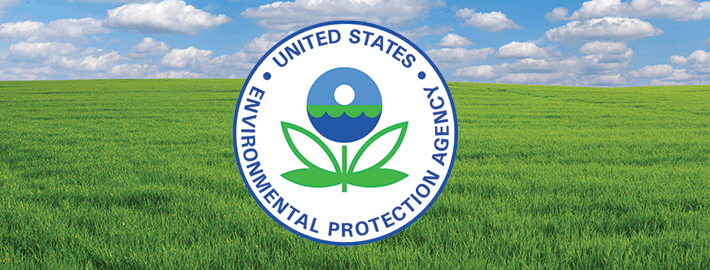
MS4 STORM WATER SEWER SYSTEM:
What is Stormwater?:
Rain or snow that falls either soaks into the ground to become groundwater, evaporates, is used to help plants grow, or flows off over the land surface. The overland flow is called runoff or stormwater. This water eventually flows into streams, rivers, or lakes.
As stormwater flows over the land it washes along or dissolves some of the materials in its path. Vegetation growing on surfaces can slow the flow down, filter out sediments, and can break down or trap pollutants in the root zone. If there is no vegetation where the stormwater must flow, such as where there are buildings, pavement covered roads, parking areas, and walkways, the volume and speed of stormwater runoff increases since the stormwater cannot soak in. When there are no plants that need the water to grow, the hard surfaces present little resistance to flow. This is why stormwater must be managed when we develop the surface of the land.
Stormwater Management:
To prevent flooding and protect property in developed areas, stormwater drainage systems are used to collect stormwater runoff and carry it away from roadways and structures to a discharge point. Stormwater drainage systems consist of curbs, gutters, storm drains, channels, ditches, pipes, and culverts. These types of systems do not treat stormwater. Most of these discharge directly into streams, rivers, and lakes.
Issues With Stormwater:
Stormwater becomes a transportation system for pollutants. Soil that erodes from a construction site, cigarette butts and other litter from parking lots, antifreeze and oil dripped from cars, fertilizers and pesticides from turf management, and grit and salt left from de-icing operations on roadways can be deposited untreated into our waterways. Water can contain and transport sediments, metals (such as copper, cadmium, chromium, lead, and zinc), nutrients (such as nitrates, phosphates, and ammonia), salt, petroleum products and coliform bacteria among other materials. This is why stormwater is such a significant contributor to water pollution. Polluted stormwater runoff that discharges in urbanized areas cause serious water-quality problems. Polluted stormwater runoff that discharges in urbanized areas can cause serious water-quality problems. Polluted runoff to waterbodies can affect aquatic plant and animal life in streams and lakes, reduce recreational activities such as boating and swimming, and increase flooding conditions.
What Jenkins Township Is Doing:
To comply with Federal and State stormwater permit requirements, Jenkins Township must not only manage stormwater by collecting and conveying away from roads and buildings, but now must also reduce the amount of pollution that reaches the streams and rivers in the Township and find ways to manage the additional volume of runoff that results when surfaces are changed from vegetation to pavement. New stormwater management techniques involve creating more natural facilities to handle the runoff. These stormwater best management practices that are planted with native vegetation, like rain gardens and swales, mimic the way nature dealt with stormwater before human development of land surfaces.
What You Can Do:
Even homeowners can do things at their home and property to manage stormwater. By installing a rain barrel to collect roof water, planting a rain garden, or even by not cutting your lawn so short, you can help manage the stormwater that runs off your property. For more information about what government, businesses, and homeowners in Jenkins County can do to manage stormwater, please visit the Luzerne County Storm Water Management Plan on their website.
What is the NPDES Stormwater Program?
The National Pollutant Discharge Elimination System (NPDES) Stormwater Program regulates stormwater discharges from three potential sources: municipal separate storm sewer systems (MS4s), construction activities, and industrial activities. Most stormwater discharges are considered point sources, and operators of these sources may be required to receive an NPDES permit before they can discharge. This permitting mechanism is designed to prevent stormwater runoff from washing harmful pollutants into local surface waters such as streams, rivers, lakes or coastal waters.
Most states are authorized to implement the NPDES Stormwater Program and administer their own stormwater permitting programs. EPA remains the permitting authority in a few states, territories and on most tribal lands. For these areas, EPA provides oversight and issues stormwater permits.
Who is covered under the NPDES Stormwater Program?
The NPDES Stormwater Program covers the following types of stormwater discharges:
•MS4s – Operators of large, medium and regulated small MS4s may be required to obtain authorization to discharge stormwater.
•Construction Activities – Operators of construction sites that are one acre or larger (including smaller sites that are part of a larger common plan of development) may be required to obtain authorization to discharge stormwater under an NPDES construction stormwater permit. Where EPA is the permitting authority, operators must meet the requirements of EPA’s Construction General Permit (CGP).
•Industrial Activities – Industrial sectors may require authorization under an NPDES industrial stormwater permit for stormwater discharges. Where EPA is the permitting authority, operators must meet the requirements of EPA’s Multi-Sector General Permit (MSGP).
Where Can I Find More Information?
EPA has produced a wide variety of webcasts and guidance documents to help stormwater program managers develop or improve their stormwater management programs. The National Menu of BMPs has been created to educate operators on the different BMPs available to reduce stormwater pollution. EPA also created the keys to BMP performance to help operators monitor their BMPs. Additionally, many other customizable outreach documents have been developed for public distribution to increase knowledge of stormwater pollution prevention in everyday activities. EPA has also compiled a large collection of existing state and non-profit outreach information for local agencies interested in educating the public on nonpoint source pollution or stormwater runoff.
Storm water Emergency Hotline
570-825-3416 (Emergency 24/7/365)



